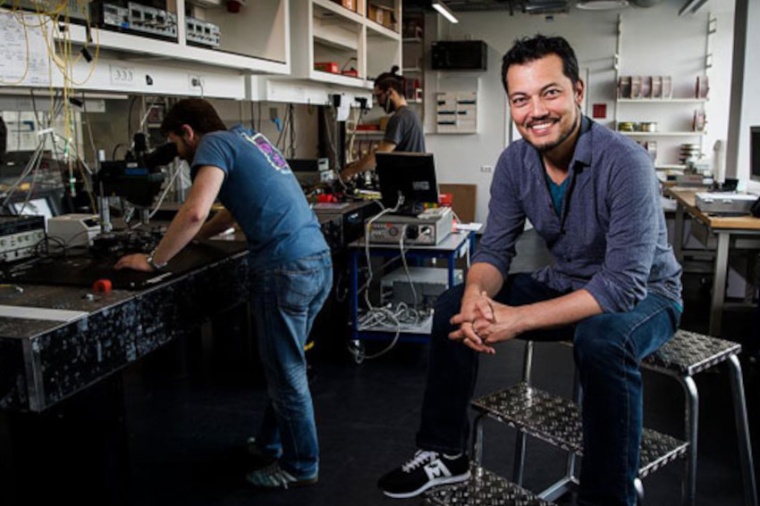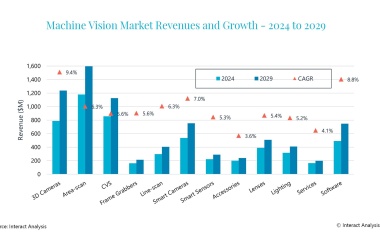New data transmission record
Using only a single light source, scientists have set a world record by transmitting 1.8 petabits per second.
An international group of researchers from Technical University of Denmark (DTU) and Chalmers University of Technology have achieved dizzying data transmission speeds and are the first in the world to transmit more than 1 petabit per second (Pbit/s) using only a single laser and a single optical chip. In the experiment, the researchers succeeded in transmitting 1.8 Pbit/s, which corresponds to twice the total global Internet traffic. This was carried by the light from only a single optical source and not the more than 1,000 lasers that it would otherwise require with the current state-of-the-art commercial equipment.

The light source is a custom-designed optical chip, which can use the light from a single infrared laser to create a rainbow spectrum of many frequencies. Thus, the one frequency of a single laser can be multiplied into hundreds of frequencies in a single chip. The chip has been developed and manufactured by a group of researchers at Chalmers University of Technology in Sweden led by Victor Torres Company. Researchers from DTU have contributed with a computational model to examine theoretically the fundamental potential for data transmission with a single chip identical to the one used in the experiment. The calculations showed enormous potential for scaling up the solution.
“Our calculations show that – with the single chip and a single laser – we will be able to transmit up to 100 Pbit/s. The reason for this is that our solution is scalable – both in terms of creating many frequencies and in terms of splitting the frequencies into many spatial copies and then optically amplifying them, and using them as parallel sources for transmitting data.” The researchers’ solution bodes well for the future power consumption of the Internet. “Our solution provides a potential for replacing hundreds of thousands of the lasers currently located at Internet hubs and data centres, all of which guzzle power and generate heat. We have an opportunity to contribute to achieving an Internet that leaves a smaller climate footprint,” says Leif Katsuo Oxenløwe. (Source: DTU)
Reference: A. A. Jørgensen et al.: Petabit-per-second data transmission using a chip-scale microcomb ring resonator source, Nat. Phot. 16, 798 (2022); DOI: 10.1038/s41566-022-01082-z
Link: DTU Fotonik, Technical University of Denmark, Lyngby, Denmark











